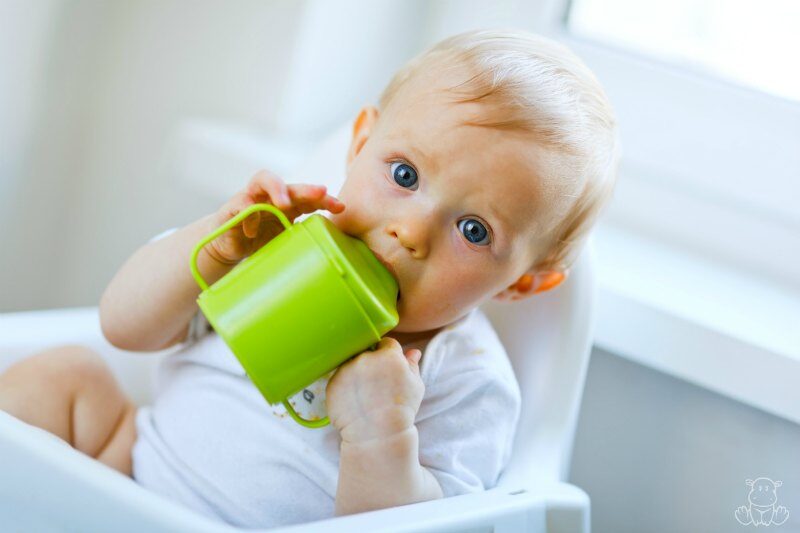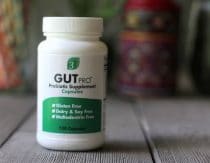
So, you’re probably normal. When your sweet babe began placing every sort of toy inside her mouth EXCEPT the toys you bought for that specific purpose, you probably didn’t go online and price the XRF machines so that you could scan random objects for lead. Even if it was your first baby, that would be just nuts.
Ahem.
Fortunately, we don’t live in a country where profits are regularly put before human health. As soon as the devastating health effects of bisphenol A were discovered, the U.S. banned it outright.
Oh wait, I have that mixed up. China, Malaysia, Canada, and the European Union all had the sense to ban bisphenol A (BPA) for certain uses before the FDA finally caved to pressure and banned it in baby bottles and cups. (source)
The FDA enacted the ban without admitting BPA is harmful in any way. In their words, they were just “codifying” the general trend away from BPA-infused products. According to a 2010 study, products touting the “BPA-free” label went up 577% in just the twelve months between 2009-2010!
Don’t breathe that sigh of relief yet, though. Let’s set aside for a moment that BPA is still regularly used in children’s toys, food packaging, dental fillings and a variety of other products. There’s something else going on here.
An “Alphabet Soup” Of Toxic Bisphenol
According to this article, “Now that consumers are refusing to buy BPA-containing containers manufacturers have had no choice but to oblige with seemingly bisphenol-free alternatives. Ironically, BPA is used to make Sippy Cups (and polycarbonate) shatterproof, and therefore ‘safer.’ But, instead of manufacturers actually removing the danger in BPA-free labeled products, many are capitalizing on this marketing opportunity by removing only the perception of danger, opting to substitute BPA for equally toxic members of the bisphenol chemical class.”
Yep, that’s right. There’s basically an “alphabetic soup of toxic bisphenols in consumer goods,” says this article, which goes on to list them as:
- Bisphenol A
- Bisphenol AB
- Bisphenol AF
- Bisphenol B
- Bisphenol BP
- Bisphenol C
- Bisphenol E
- Bisphenol F
- Bisphenol G
- Bisphenol M
- Bisphenol S
- Bisphenol P
- Bisphenol PH
- Bisphenol TMC
- Bisphenol Z0
In a study conducted last year, researchers found that manufacturers are quietly replacing bisphenol A with bisphenol S (BPS) in many products. Can these products be labeled as BPA-free? Yes they can. Maybe that’s why another study conducted last year found that “Bisphenol S concentrations in urine from the citizens of 8 countries were within the same concentration ranges as Bisphenol A levels reported by the same research group in the year before.[4]” In other words, BPA levels dropped, but almost at the exact same rate that BPS levels rose. (Here’s a link to the original study)
Other sources have confirmed that – at least in Europe – “BPA-free” baby bottles now contain BPS. (source) As far as I know U.S. manufacturers have not revealed what they’re using.
How Safe Is BPS?
Not a lot of studies have been done, but preliminary research indicates that it may actually be WORSE than BPA! Here’s why. From the studies we have, it appears that BPS has about the same level of estrogenic activity. (source 1, source 2) So far, the estrogenic activity of BPA has been linked to:
- Reproductive disorders (source)
- Male impotence (source)
- Heart disease in adults, especially women (source 1, source2)
- Altered sex hormones in men (source)
- Type 2 diabetes (diabetes)
- Impaired brain function, memory, learning (source)
- Depression (source)
- Breast cancer (source)
- Asthma (source)
What makes BPS potentially worse is that research indicates it takes longer to biodegrade. In other words, it may to stay with us longer and therefore have a more lasting effect. (source)
Coca-Cola Says Consumers Should Have Known They Were Lying
Recently a non-profit public interest group sued Coca-Cola on the grounds that it’s Vitamin Water product makes unwarranted health claims – for example, ads for Vitaminwater used slogans like, “Kiss me, I’m healthy!”
To defend itself, Coca-Cola’s lawyers contended that “no consumer could reasonably be misled into thinking Vitaminwater was a healthy beverage.” (source)
So basically, their defense is that we should have known they were lying? How very reassuring.
As parents, I think a healthy dose of skepticism is needed regarding manufacturers claims. Labels can mislead, and untested chemicals are usually presumed to be safe until a mountain of evidence proves otherwise. For example, did you know that marines were once told that Agent Orange was essentially “so safe you can drink it”? (source)
Do I Live My Life In Fear Of Plastic?
No! My kids have plastic toys and I do not call manufacturers about the composition of every single one. However, I do my best avoid plastic whenever possible, opting instead for glass water bottles & food storage containers, fresh foods instead of canned items, homemade glass spray bottles for cleaning supplies, etc. And of course, I don’t rely on labels to tell me everything I need to know!
Are you surprised that BPA-free products can still contain bisphenol?
What do you think of manufacturers sneaky labeling practices?
Photo credit: Andrew Seaman, Monkey Mash Button





This is so disappointing to read, but I’m glad I know. Thank you!
Wow, was that really Coca Cola’s argument? Kind of makes it hard to believe anything on labels!
Thanks for this! Is there a particular sippy cup that you recommend?
Life Factory makes one that they have confirmed is free of ALL forms of bisphenol. You can find it here.
However, with my son we skipped the sippy altogether and got him this child-sized version. It worked very well for him!
Heather, Can you elaborate on why you skipped the sippy and went straight to the child-sized version. What age was your son when you introduced it? I’ve been pondering whether I should be offering my baby water with meals or at other times. He nurses plenty, so I’m not sure whether the water is necessary. And I’ve been stumped over what to do about the sippy. KleanKanteen makes one that is stainless but has the silicone spout. I’ve read reports that silicone is made from sand and is inert and totally safe, and I’ve read reports that it’s totally not safe because of fillers and such that are used in the production of it. Who to believe? *sigh* (I’ve let my baby chew vigorously on the silicone teethers from Life Factory, assuming they were safe, and then just a couple days ago read something about silicone being dangerous. Grrrrr… so hard to navigate all of this.) So I had looked at the Life Factory ones but they have the plastic spout (is this why you skipped it?). Also, I’ve read that it is recommended to have a soft spout so that it doesn’t interfere with the child’s oral development like the hard spouts can…so that led me back to the Klean Kanteen, but then there’s that silicone issue again. So we’re sippy-less (and just going with breastmilk instead of water) while the jury is still out. Well, not completely… we do use these cute little glasses that are made by Duralex, I think. Perfect size for a baby learning to drink. We hold it for him and he really gets a kick out of drinking from it – usually chicken broth. Messy, as chicken broth runs down his chin…but at least I feel okay about the fact that it’s just glass. But I know eventually we’ll need something to take along when we’re out of the house, something he can hold by himself to drink water from when it’s summer and super hot outside, etc. I like the one you used. Have you had any issues with difficulty drinking from it without spilling, or with the glass lip of it getting broken (since it’s not protected like it would be with a lid/spout on it)?
Thank you for this info! I’ve tried to stay BPA-free with my baby (especially with his dishes and utensils and such) and we really like the Safe Sippy (which is stainless with a few plastic parts). Of course, I had no idea that other bisphenols were so commonly used on things marked BPA free, but it looks like the Safe Sippy uses just #5 Polypropylene and LDPE #4. (I found this info here: http://laurasrules.org/tag/bisphenol-a/)
While I knew this was the case I only just found out there is BPA in canning lids. GRR…there is no way out it seems.
I looked into this issue and found that Tattler lids do not contain BPA and can be used on standard canning jars (regular and wide mouth). Plus they are reusable indefinitely, a bonus compared to standard mason jar lids.
yes but they contain formaldehyde, which is even worse?
Thanks for doing the research and posting this! What do you use for food storage? Do you use a particular product/brand? I’ve wanted to get rid of plastic cups and food containers for a while but I don’t know what I would replace those things with or what my hubby would pack his lunch in.
I have been wanting to switch out all my plastic for a while now. The storage containers are easy to change. The hardest part would be my sons sippy cups. I have seen the glass ones that are really nice looking- but hes a thrower. Any recommendations for a sippy that is very very durable?
Stainless steel (not aluminum) is probably your best bet.
Anyone know of an alternative to a plastic shampoo bottle (other than a soap bar)? I’m afraid what would happen if glass were to be dropped…
Plus you wouldn’t be able to squeeze it to get the shampoo out….you could use a stainless water bottle and just pour it out..
I knew BPA-free was too good to be true, and had a feeling that whatever was replacing it was probably worse… disappointed to not be wrong! 🙁
We use the Klean Kanteen stainless steel sippy cup and can be switched to a sports top when the toddler is ready. Here’s the link: http://www.kleankanteen.com/products/kid/kid-kanteen-sippy-classic.php. It’s awesome!
Some days I just want to bury my head in the sand and just pretend none of it exists. I want to but won’t!
I knew something was up when I learned that anything marked with a “7” in a little triangle on the bottom of your plastic containers would have BPA in it — there are “7’s” on ALL our “BPA-Free” cups!! I recently discoverred sippy-covers designed to fit Ball jars. They’re pricey, but I think I may go ahead and get a few.
Rebecca, can you link to these sippy covers for ball jars? I would love to see those!
Number seven is just everything lumped together because regulators got lazy after reaching #7. There is perfectly safe biodegradable poly(lactic acid). In other words polymerized sour kraut juice… The sad part is that any new plastic will get there…
Thanks for this important and illuminating post. We are a corporate conglomerate, not a country, I do believe.
I recently purchased some cans of Bearitos black bean refried beans that have “Non-BPA Lining” on the label (just for emergencies when I haven’t had time to soak my own organic dry beans overnight and add my own home-rendered pastured lard and sea salt, of course!). So I called the 1-800 number on label and asked if the can lining contains any form of Bisphenol since I’ve learned that there are more than a dozen forms of toxic Bisphenol that can be used in products and still be labeled BPA Free. The person answering phones for the company did not have an answer but said he would forward my question to the research department and get back to me with an answer one way or the other.
I’ll let you know what I find out. I think we should all do the same with the products we use.
not surprising since the FDA allows them to also label things a 0 transfer fa as long as there is no more than.5 grams in a serving. Talk about deception!
Not entirely surprising, sadly. The little voice in my head had said “I wonder what they are using instead of BPA in this water bottle?” but I ignored it. Oh man. What did people do before sippy cups? Glass juice glasses? Embrace the grape juice stains?
Great info Heather! As usual! We stick to stainless steal and glass around here. When he gets plastic sippy cups at Grandmas house I just let it slide.
A good reason to simply skip sippy cups. I tried using one with one of my kids and he began biting me when he nursed, just like he bit the sippy cup. So for the next several kids I just saved my money. I offer them small sips from my own glass until they’re ready for a small glass of their own. We break glass around here every once in awhile, but it’s no big deal
Not surprised in the least…..and highly suspect half the stuff labeled “organic” is anything but.
This is interesting and definitely deserves further investigation into the individual products labeled as BPA-free. Has it been confirmed that BPA-free cans of coconut milk, for instance, are all made with BPS?
I am wondering the same thing about the coconut milk. I avoid plastic whenever possible, but there are a few things that I still wonder about. I use mason jars alot in my kitchen, with the BPA-free plastic storage lids, rather than the typical 2-piece canning lids which do contain BPA. But I realize the lids are still plastic and therefore could have other problematic chemicals, even though no BPA. But I figure that at least it’s not touching the food, typically. Also, while I avoid canned foods for the most part, I have continued to use coconut milk and organic pumpkin that comes in BPA-free cans. But I do wonder what IS in the can linings. Maybe safe, maybe not. Anyone know more about this? This topic of BPA-free canned coconut milk comes up really frequently on real-food blogs, and it’s generally recommended to stick with the BPA-free cans. But are we all consuming lots of BPS or other nasty stuff, even with BPA-free cans? Especially since lots of people following this lifestyle consume LOTS of coconut milk!
Ever mounting evidence of the corporatocracy we live in, which has by and large overrun what was supposedly a democracy, but take that with a grain of salt. Good post, if not a tad frightening!
This is a sad world full of inhuman people.
While I am no proponent of toxic chemicals being added to our products a little more information would have been helpful. I usually love your posts but was very disappointed in this one as you are using scare tactics. Bps is only soluble in ethanol so none of it is leaching through the products and into our systems/bodies. Not cool. Not cool at all.
Hi Tiffany, according to this study BPS levels are rising in urine samples just as BPA levels are falling;, so it appears that it can be absorbed. According to the study’s authors, the rise and fall roughly correlates with the replacement of BPA-containing products for BPS-containing ones. http://www.ncbi.nlm.nih.gov/pubmed/22620267
Also, while I am always open to being corrected if I’ve missed something, I hope that in the future you’ll give me the benefit of the doubt regarding my motives.
Hi there.
Could you give a source link for this info.
Thanks
One of the central problems (more often than not NOT disused) is the so called “safe thresholds” agreement is based versus the precautionary principle. Europe has general adopted the Precautionary Principle –if in doubt, don’t. The US still clings tenaciously to ‘safe thresholds’ — so many parts per million or billion of this chemical contaminant or that one –BPA, BPS, BPAB, B, BT etc. — is “safe”. The alleged ‘safe thresholds’ arguments is flawed in several ways–it ignores the synergistic effect of multiple contaminate on different cohorts of the human population–foetuses, pregnant women, young children, young adults, middle aged and old people and different parts of the human biological system: neural pathways, kidneys, livers, upper respiratory systems, cellular systems, endocrine and hormonal systems, immune systems.
So, in summary, if you ignore as fundamental basis as the difference between alleged ‘safe thresholds. and the ‘precautionary principle’ any research design is fatally flawed. Most disclosure about chemicals comes from manufacturers, hardly an independent sours. We have a lot of experience in this country about lying with statistics and we have mounting evidence that much of the ‘research’ on chemicals that have an impact on human health across the age, gender spectrum done my manufacturers is carefully designed to disinform and is selective and deliberately so–apparently. Go back and re-read Rachel Carson’s Silent Spring–of at least 50 years ago. We need to learn from the long string of mistakes and disinformation embedded in the historical record. Those who ignore the lies of history, ignore reality–to their detriment and that of their children and of future generations. This may sound a bit alarmist but if you know what I know (which is far from everything–those who claim to know “everything” ought to be suspect) you ought to concerned about the difference between the ‘precautionary principle’ and the seriously defective other basis for determining toxicity, particularly toxicity that has one or several impacts on human biological systems.
Think of multiple contaminants in public supply sources of drinking water, the stuff that comes out of your faucet.
Then think a bit about the water you buy in plastic containers. Every plastic container of water on the market is unregulated in this country–as far as I know. So we don’t know what chemical contaminants are in plastic containers of drinking water. And we have no disclosure info on the impacts of the plastic containers on what is inside of them. Cause for concern? I think so. Cause for asking questions? I think so. Cause for sounding the alarm? I think so.
All intelligent answers to questions we have about chemicals and chemical contaminate (as in all science in general) begin with asking the right, relevant questions. The answers we get to any question we pose about pretty much anything are only as good as the quality of the questions we ask. Time to ask high quality questions. Disclosure and transparency are slippery beasts. Disclosure and transparency are particularly beasts in the hands of big $ manufacturers who have millions, billions at stake. They will lie, as they have in the past. They pay huge consultant fees to messaging agents to disinform the public. We’re caught in the same maze as Alice: the more things change, the more they remain the same … or get worse.
Ka’a’awa, HAWAI 96730
Chemical companies often say that it is just a little amount. They said that about dioxin, PCBs, even Glyphosate (Roundup). But there is a video online from Canadian Environmental Health Atlas, entitled “Little Things Matter: The Impact of Toxins on the Developing Brain” at: https://www.youtube.com/watch?v=E6KoMAbz1Bw
This is a good explanation AND video.
Excuse the obvious typos in the first couple of paragraphs–was in an indecent hurry. Apologies!
JA
This is probably a silly question, and possibly taking my crunchiness to a whole new level… But, do you have any recommendations for real food that comes packaged in plastic? For example: our raw milk, raw cheese, pastured/grassfed meat is all packaged in plastic. I’m currently on the hunt for glass milk jugs because I can’t stand the thought of tainting the milk! LOL.
I have been looking for good popsicle molds for the summer and plastic is the obvious no-no. But I now have also heard conflicting things about silicone. Can you recommend any? Are glass popsicle molds safe? I worry about them cracking…
Shot glasses with a popcicle stick work great
what do you suggest freezing breast milk in? I’m home full time with my little guy but need to get out every once in awhile. Thank you for all this info!!
i freeze breast milk in 4 and 8 oz mason jars. i store 3 oz of milk in the 4 oz jars and 6-7 oz of milk in the 8 oz jars. this allows for expansion and the milk still does not touch the top of the lid once frozen. i’ve had great success using this method. (oh and i also boil the mason jars and lids for 20 minutes before i use them. i then examine all the jars for cracks and discard any questionable ones.)
Totally, totally awesome post!
And totally awesome blog site. I’m learning so much.
Thank you, Mommypotamus!
I have been waiting for the reasurch to come out thank you !
Ive been looking into phthalates recently looks like they are conected to not fully formed males, endometriosis ect. Its also recycling symbol 3 so if your avoiding BPAs at least its already done, I just wondered if you had any concerns ?
So then what about for sippy cups?